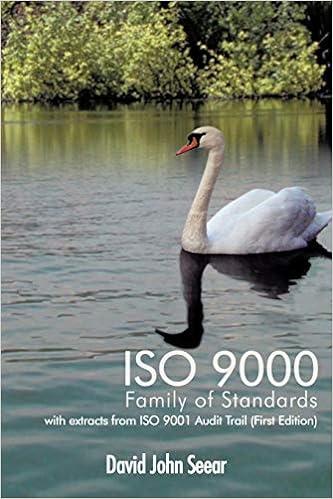Answered step by step
Verified Expert Solution
Question
1 Approved Answer
Homework Saved Help Save & Exit Submit Required information (The following information applies to the questions displayed below.) Laker Company reported the following January purchases





Homework Saved Help Save & Exit Submit Required information (The following information applies to the questions displayed below.) Laker Company reported the following January purchases and sales data for its only product. Units Acquired at Cost 215 units@ $14.00 - $3,010 Units sold at Retail 165 units @ $23.00 Date Activities Jan. 1 Beginning inventory Jan. 10 Sales Jan. 20 Purchase Jan. 25 Sales Jan. 30 Purchase Totals 160 units@ $13.00 - 2,080 190 units @ $23.00 330 unitse $12.50 - 705 units 4,125 $9,215 355 units The Company uses a perpetual inventory system. For specific identification, ending inventory consists of 350 units, where 330 are from the January 30 purchase, 5 are from the January 20 purchase, and 15 are from beginning inventory. Required: 1. Complete the table to determine the cost assigned to ending inventory and cost of goods sold using specific Identification. 2. Determine the cost assigned to ending inventory and to cost of goods sold using weighted average. 3. Determine the cost assigned to ending inventory and to cost of goods sold using FIFO. 4. Determine the cost assigned to ending inventory and to cost of goods sold using LIFO. Screen Shot Screen Required 1 Required 2 Required 3 Required 4 Complete the table to determine the cost assigned to ending inventory and cost of goods sold using specific identification. (Round places.) Specific Identification Available for Sale Cost of Goods Sold Purchase Date Activity Unit Cost Units Units Sold Ending Inventory Ending Inventory. Cost Per Inventory Units Cost COGS Unit Cost COGS Inventory Unit Jan. 1 Jan. 20 Jan. 30 Beginning inventory Purchase Purchase 215 160 330 705 Required 2 > Required 1 Required 2 Required 3 Required 4 Determine the cost assigned to ending Inventory and to cost of goods sold using weighted average. (Round cost per unit to 2 decir Weighted Average - Perpetual: Goods Purchased Cost of Goods Sold Inventory Balance Date of # of units Cost per unit units Cost per Cost of Goods unit Sold # of units Cost per unit Inventory Balance sold January 1 215 @ $ 14.00 - $ 3,010.00 January 10 January 20 Average cost January 25 January 30 Totals Required 1 Required 2 Required 3 Required 4 Determine the cost assigned to ending inventory and to cost of goods sold using FIFO. (Round cost per unit to 2 decimal places.) Perpetual FIFO Goods Purchased of Cost per units Date Cost of Goods Sold of units Cost per Cost of Goods Sold unit Sold Cost per Inventory Balance January 1 215 @ $ 14.00 = $ 3.010.00 January 10 January 20 January 25 January 30 Required > wired information Required 1 Required 2 Required 3 Required 4 Determine the cost assigned to ending inventory and to cost of goods sold using LIFO. (Round cost per unit to 2 decimal places Perpetual LIFO ods Purchase Date Cost per Cost of Goods Sold of units Cost per Cost of Goods sold unit Sold Inventory Balance Inventory unit Balance # of units Cost per 215 @ $ 14.00 - $ 3,010,00 January 10 January 20 ces January 25 January 30 Totals
Step by Step Solution
There are 3 Steps involved in it
Step: 1

Get Instant Access to Expert-Tailored Solutions
See step-by-step solutions with expert insights and AI powered tools for academic success
Step: 2

Step: 3

Ace Your Homework with AI
Get the answers you need in no time with our AI-driven, step-by-step assistance
Get Started


